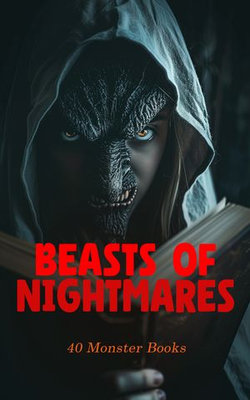Dive into the chilling and imaginative world of 'The Beasts of Nightmares: 40 Monster Books,' a collection that brings together some of the most spine-tingling tales from the masters of horror and gothic literature. This anthology encapsulates a rich tapestry of monstrous creations, exploring the darkest recesses of the human psyche, the uncanny, and the supernatural. With stories ranging from grotesque creatures that lurk in the shadows to psychological terrors that challenge the boundaries of reality, this collection stands as a testament to the enduring fascination with fear and the unknown. Notable pieces include eerie metamorphoses, daunting curses, and otherworldly encounters that collectively underscore the depth and versatility of the horror genre. The editors have meticulously curated a set of narratives that not only terrify but also provoke profound introspection and wonder. The contributing authors of 'The Beasts of Nightmares' are luminaries whose works have significantly shaped and defined the horror and gothic genres. From the eerie elegance of Mary Shelley's gothic novelistic style to the captivating narratives of H. P. Lovecraft, each writer brings a unique voice that complements the overarching theme of monstrosity. This anthology spans multiple eras and literary movements, from Victorian Gothic to early science fiction, shedding light on the socio-cultural anxieties and imaginative visions of their times. The diverse backgrounds and experiences of these writers fuse to create a rich, fear-infused mosaic that appeals to both scholars and fans of macabre literature. For those eager to immerse themselves in a single volume that offers a vast array of perspectives and terrifying tales, 'The Beasts of Nightmares: 40 Monster Books' is an indispensable addition to any collection. This anthology not only provides gripping narratives but also serves as a valuable educational resource, enabling readers to explore the evolution of horror literature. Embark on this eclectic journey through nightmares and monsters, and discover the myriad ways in which these stories reflect and reshape our understanding of fear and the monstrous.



Share This eBook: